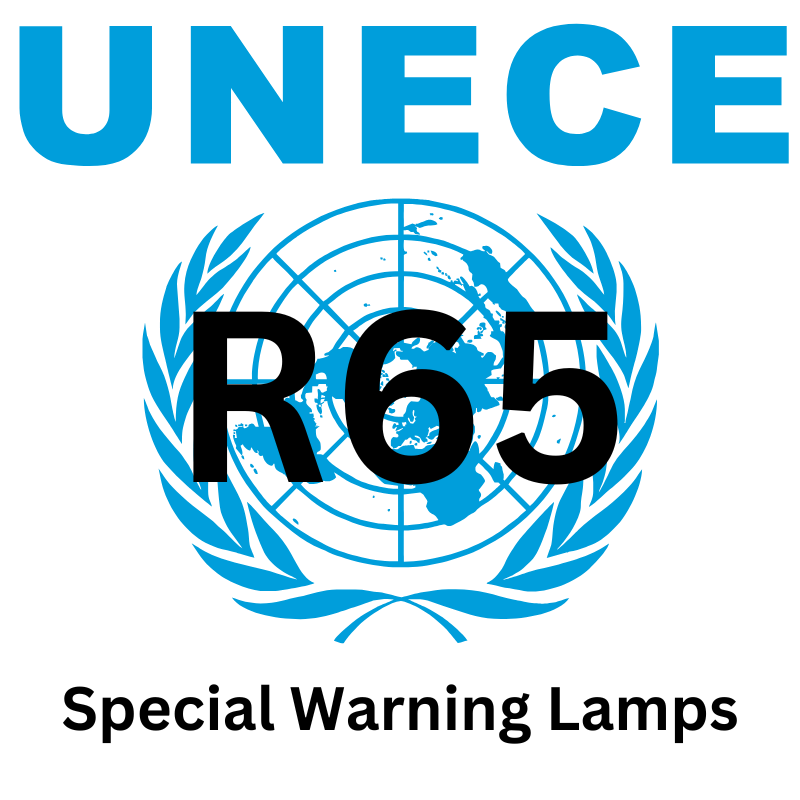Guide To: ECE Regulation 65
05 July 2018

Guide To: UNECE R65 - Special Warning Lamps
UN ECE Regulation No. 65 provides the uniform provisions concerning the approval of special warning lamps used on motor vehicles and trailers. These warning lamps are designed to emit flashing blue or amber light to signal the presence of a vehicle that requires special attention or priority on the road, such as emergency services, construction vehicles, or escort vehicles.
Scope of the Regulation
UN ECE R65 applies to:
- Special warning lamps used on vehicles in categories L, M, N, O, and T, which include motorcycles, passenger cars, trucks, trailers, and agricultural vehicles. These lamps are typically used by emergency vehicles, road service vehicles, and other vehicles needing enhanced visibility.
Key Features of UN ECE R65
Types of Special Warning Lamps:
- Rotating or Stationary Flashing Lamp (Category T): Emits light intermittently in a 360-degree horizontal plane.
- Directional Flashing Lamp (Category X): Emits light intermittently in a limited angular area.
- Complete Bar: A special warning lamp system composed of two or more optical systems that emit light intermittently all around its vertical axis.
Colour and Frequency:
- Special warning lamps must emit amber, blue, or red light, depending on their intended use. Amber is often used for service vehicles, while blue is commonly used for emergency vehicles.
- The lamp’s frequency of flashing must be between 2 and 4 Hz, and the lamps must adhere to specific “on” and “off” times, ensuring that they are clearly visible in all operating conditions.
Photometric Specifications:
- The lamps must meet strict photometric requirements, ensuring that they produce sufficient light intensity to be visible from various angles and distances. These specifications ensure the lamps can be seen during both day and night, enhancing the visibility of the vehicle.
Durability and Environmental Resistance:
- Special warning lamps are subjected to durability tests, including rain tests and vibration resistance tests, to ensure they function reliably in various environmental conditions.
- Lamps must continue to function effectively in temperatures ranging from -20°C to +50°C, making them suitable for use in a wide range of climates.
Approval and Marking:
- Each special warning lamp must bear the manufacturer's trade name or mark and an approval number. This approval mark ensures the lamp has passed the necessary tests and meets the required safety standards.
- Lamps that pass the tests receive a unique approval number, along with the appropriate category and class designation, to be marked on the product.
Conclusion
Special warning lamps play a crucial role in enhancing the visibility and safety of vehicles that require special attention, such as emergency and service vehicles. Compliance with UN ECE R65 ensures that these lamps meet international standards for performance, durability, and safety, allowing them to be used effectively in various environments and traffic conditions.
Guides to ECE Regulations,E-Mark,ECE Regulation 65,Beacons,LED Lighting,Lightbars,